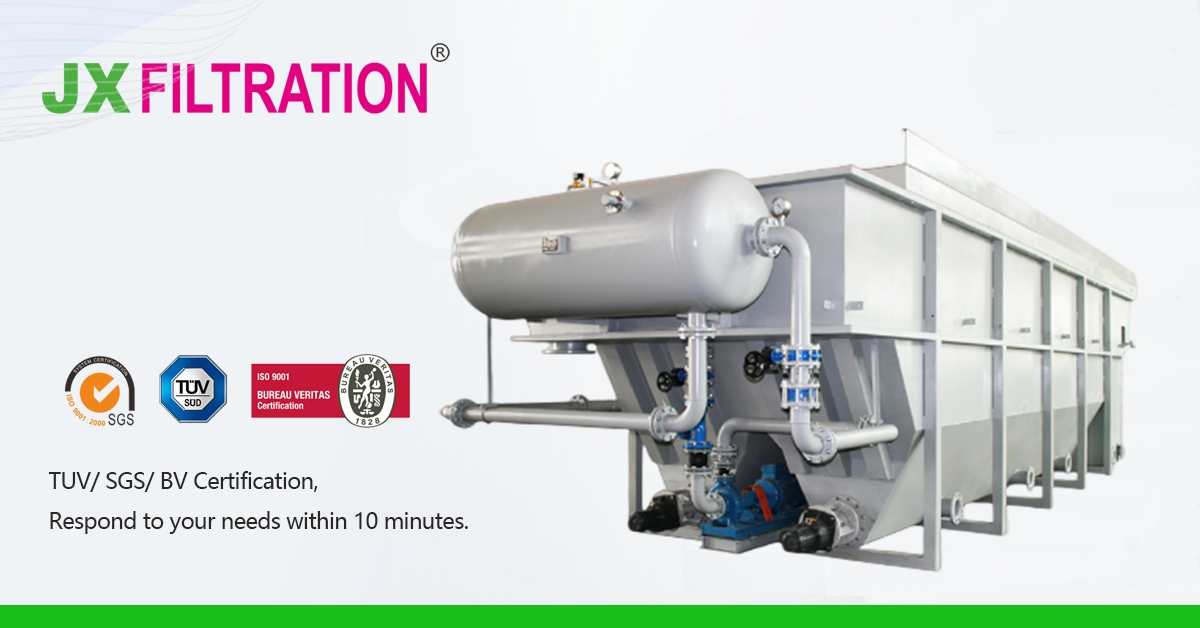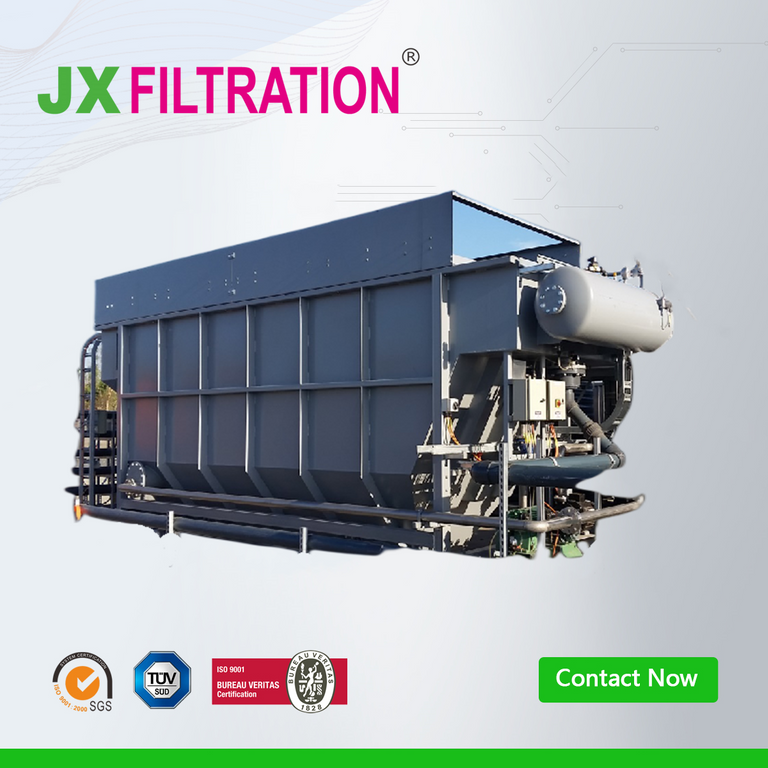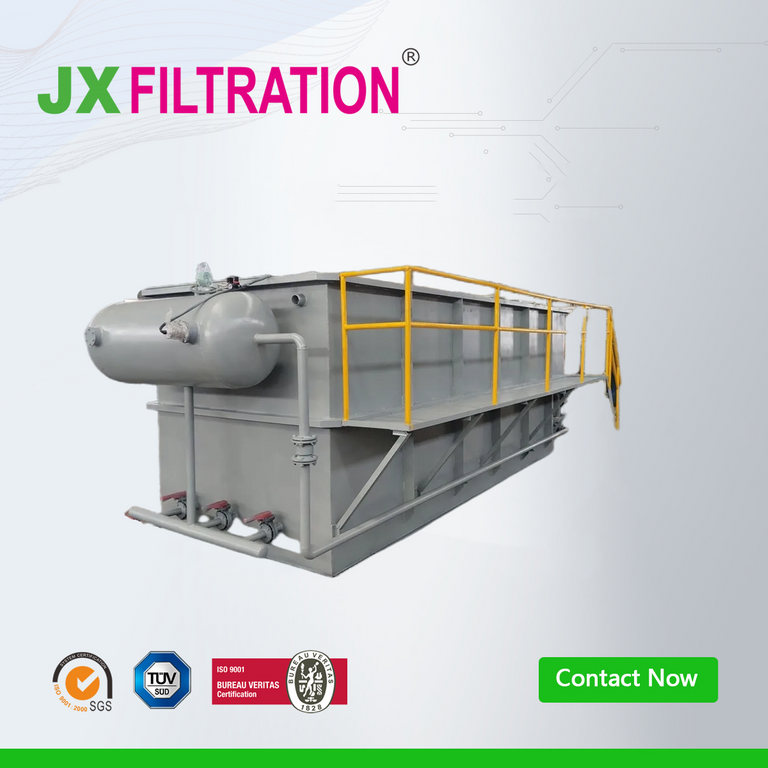How does Dissolved Air Flotation Work?
Dissolved Air Flotation is the process of introducing or attempting to generate a large number of micro bubbles in water to form a three-phase mixture of water, gas and the removed substance, so that the bubbles adhere to the suspended particles and float on the water surface.
The surface of suspended solids can be classified as hydrophilic or hydrophobic. Air flotation can be used because air bubbles can easily adhere to the surface of hydrophobic particles. Hydrophilic particles can become hydrophobic after proper chemical treatment.

Because the density of the mucus is less than that of water, Dissolved Air Flotation can achieve the separation of water and suspended matter, recovering useful substances from the wastewater, and purifying the wastewater at the same time.
Application
Dissolved Air Flotation can be used where sedimentation is not suitable to separate suspended solids with density close to water and difficult to settle, such as grease, fiber, algae, etc.
It can also be used to remove soluble impurities, such as surfactants. The method is widely used for wastewater treatment in oil refining, man-made fiber, paper making, tanning, chemical, electroplating, pharmaceutical, steel and other industries, as well as for biological treatment of bio-separated activated sludge.
Advantages
Dissolved Air Flotation has the advantages of continuous operation, wide range of use, low investment and operation cost, simple equipment, good selectivity of impurity separation, fast separation, low water content of residue, high removal rate of impurities, and high recovery rate of useful substances.
In the air flotation process, when the wastewater is oxidized, the concentration of surfactants, easily oxidized substances, bacteria and microorganisms will also be reduced.
Any requirements, contact us now!
Grace
Email:grace@filtrationchina.com
Mobile/Whatsapp/WeChat:+86 17269571160



